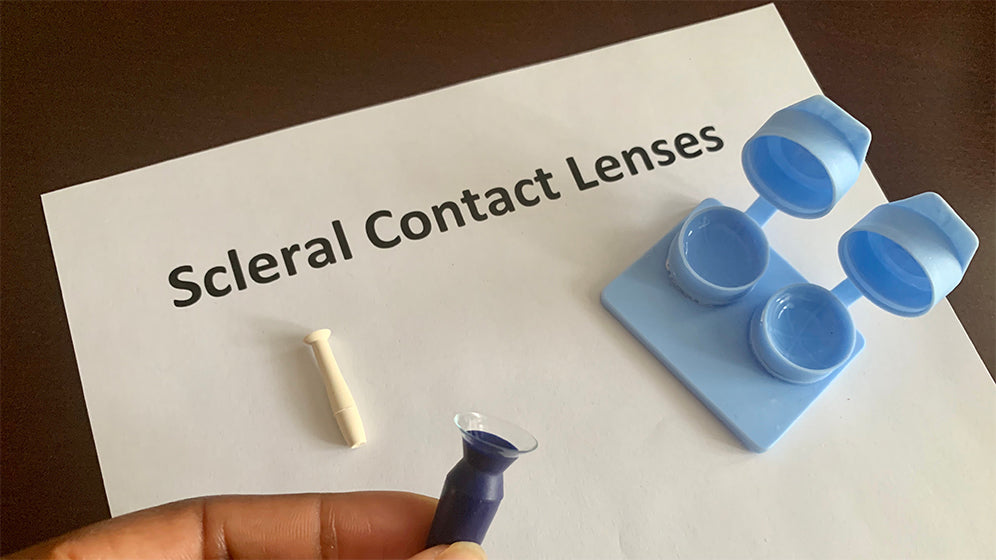We are thrilled to have a guest post from Dr. Chad M. Rosen, O.D., F.A.A.O, MBA, Associate Professor with the Michigan College of Optometry, sharing his practice’s experience with treating dry eye. The case study he discussed is about using the Tangible Hydra-PEG coating to help improve dry and uncomfortable contacts, and turn a part-time lens wearer into a full-time comfortable lens wearer.
Patient's Previous Dry and Uncomfortable Contact Lens Experience
Dr. Rosen had a 45-year-old female patient who was occasionally wearing daily disposables, and wanted to be able to wear contact lenses full-time. She also complained of dryness exacerbated by lenses. She had previously tried corneal lenses, monthly and daily disposable soft lenses, and scleral lenses. Because of the patient’s experience with previous lenses and experience with wetting issues upon fitting, Dr. Rosen ordered scleral lenses coated with Tangible Hydra-PEG in order to resolve the issue.
Improving Dry Contact Lenses with Tangible Hydra-PEG
In the follow-up visit, the patient maintained excellent vision with no signs of nonwetting and a long tear breakup time. Six months later, the patient reported “complete happiness,” rating her comfort as 9 out of 10.
In his conclusion, Dr. Rosen found that significant improvements to patient vision and quality of life can be made by using advanced tools and technologies, such as Tangible Hydra-PEG.
Because dry eye patients almost universally complain about discomfort, it may be a strategy to default to Tangible Hydra-PEG for your dry eye patients when ordering new lenses, due to the coating’s ability to maintain long-lasting wettability and lubricity. Defaulting to Tangible Hydra-PEG can cut down on patient complaints directed towards dry and uncomfortable contacts before they show up, minimizing the need for refits and lens returns.
Thank you, Dr. Rosen, for sharing your insights!
About Dr. Rosen
Dr. Chad Rosen is an Associate Professor at the Michigan College of Optometry (MCO). After attending the University of North Dakota for undergraduate education, where he obtained a Bachelor of Business Administration and majored in Entrepreneurship, he received his Optometry degree from Pacific University College of Optometry (PUCO). He then completed a residency in Cornea and Contact Lens at PUCO and went on to complete two years of Fellowship at MCO’s Vision Research Institute. Dr. Rosen also completed a Master of Business Administration (MBA) and an Advanced Studies Certificate in Management Tools & Concepts. He is also a Fellow of the American Academy of Optometry (FAAO). Additionally, Chad has received the VISTAKON Award of Excellence in Contact Lens Patient Care and the George Mertz Contact Lens Residency Award.
Dr. Rosen teaches at MCO in Ocular Anatomy & Physiology, portions of Practice Management, Environmental Vision, and Clinical Problem Solving courses. He also is an attending doctor for the students, providing clinical care to patients. He has been involved in many research projects, written publications, and is the Editor in Chief for the Journal of Contact Lens Research and Science. Dr. Rosen also enjoys lecturing at an International level to practitioners in the contact lens community.



